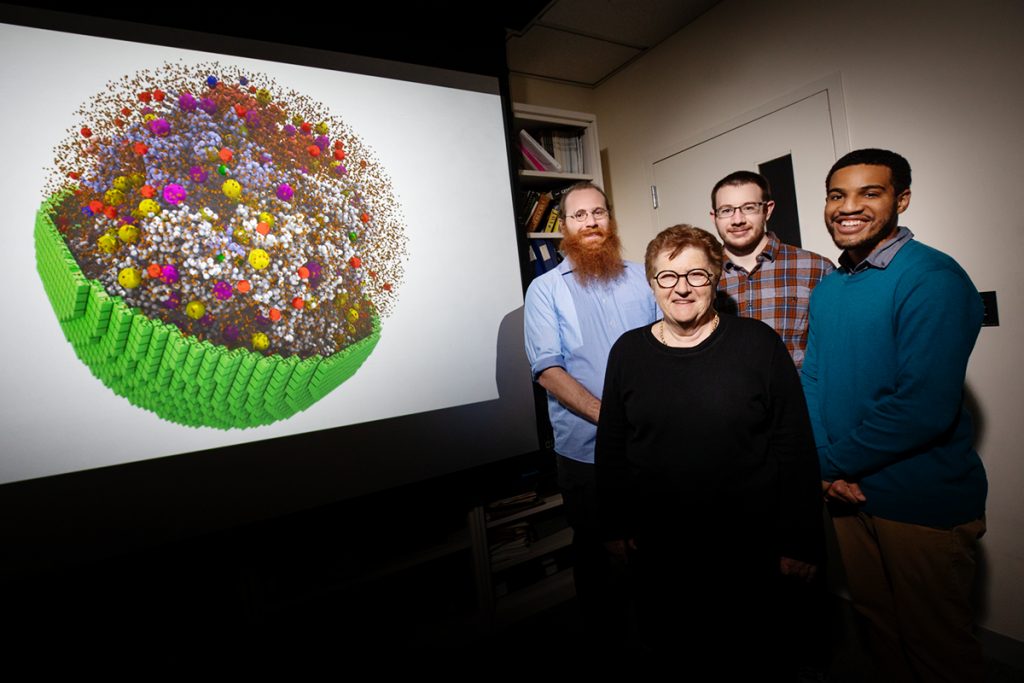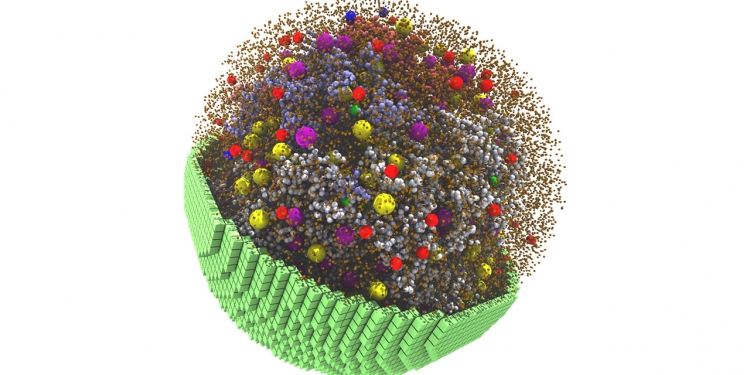I might be showing my age a little here, but I remember the game Spore and how excited I was when I saw the trailer. It was basically a ‘God game’, where you created a little organism and have it go through life itself. While not technically the same, workstation graphics cards have gotten so good that they’re now being used to simulate a living cell.
Researchers from the University of Illinois at Urbana-Champaign have done just done exactly that using NVIDIA Titan V and Tesla Volta V100 graphics cards, and have since had their work published in the journal Cell. Essentially, they have built a 3D simulation that is a fully dynamical kinetic model of a living cell. The researchers were able to watch as the cell went through the processes of active transport of amino acids and nucleosides, how it balanced its growth and metabolic needs, giving the scientists an idea of just such a simple cell goes through its life.
“Even a minimal cell requires 2 billion atoms. You cannot do a 3D model like this in a realistic human time scale without GPUs.
What we found is that fundamental behaviors emerge from the simulated cell — not because we programmed them in, but because we had the kinetic parameters and lipid mechanisms correct in our model,” – Zaida Luthey-Schulten, chemistry professor and co-director of the Center for the Physics of Living Cells at UIUC
In order to do, the researchers used computers to simulate a type of parasitic bacteria called a mycoplasma. This mycoplasma in turn was based on a model developed by other researchers over at the J. Craig Venter Institute in California. They had used this mycoplasma model specifically because it had just under 500 genes in its makeup. In comparison, the common E. coli bacteria has ten times as many genes, while a single human cell would have over 20,000 genes.

Prof Zaida and her team then built out the model mycoplasma, and used previously discovered properties such as its amino acids, lipids, and nucleotides to build the cell’s DNA, RNA, proteins and membranes. They then ran 20-minute 3D simulations of the mycoplasma’s life, enough to see what goes on without having the cell reproduce. What they found was that the mycoplasma spent most of its time and energy moving molecules across the cell membrane, which is in line with its nature as a parasitic cell.
One of the researchers, Zane Thornburg, is also working on another project involving growth simulation and cell division in 3D. They’ve since gotten hold of even more NVIDIA RTX A5000 graphics cards and NVIDIA DGX workstation computers to help speed up their research, with the RTX A5000 specifically able to speed up their simulations by up to 40% compared to the last generation GPUs they used in the mycoplasma project. It’s definitely nice to see just how far we’ve come in the science and technology scene, with computers and GPUs powerful enough to simulate life itself. Maybe we really are living in a simulation ourselves.








